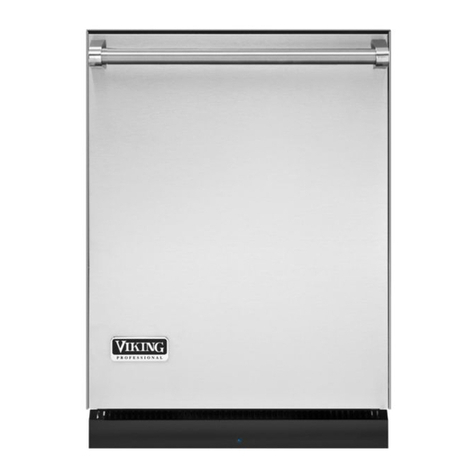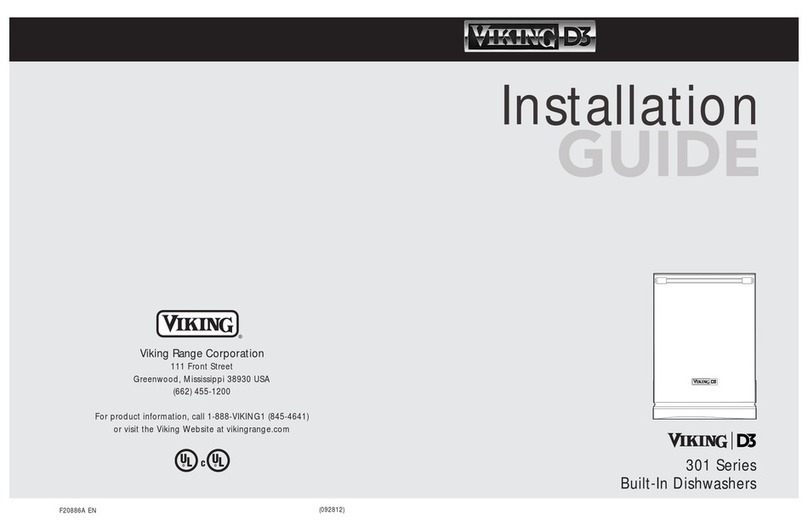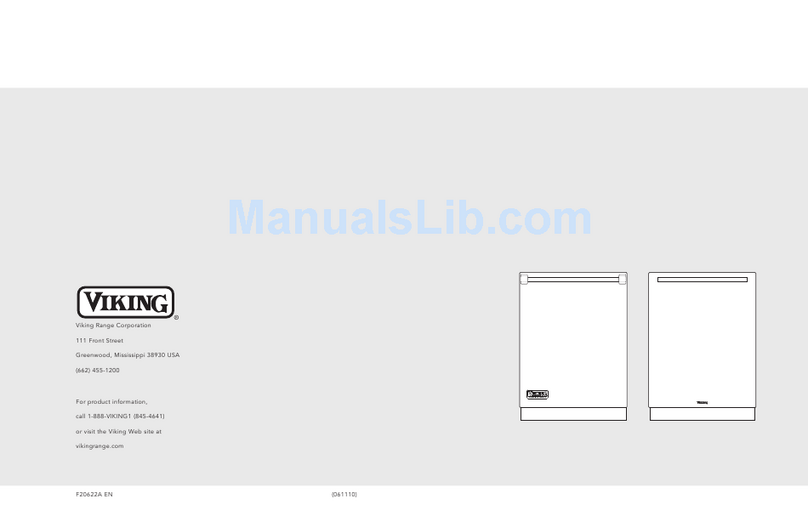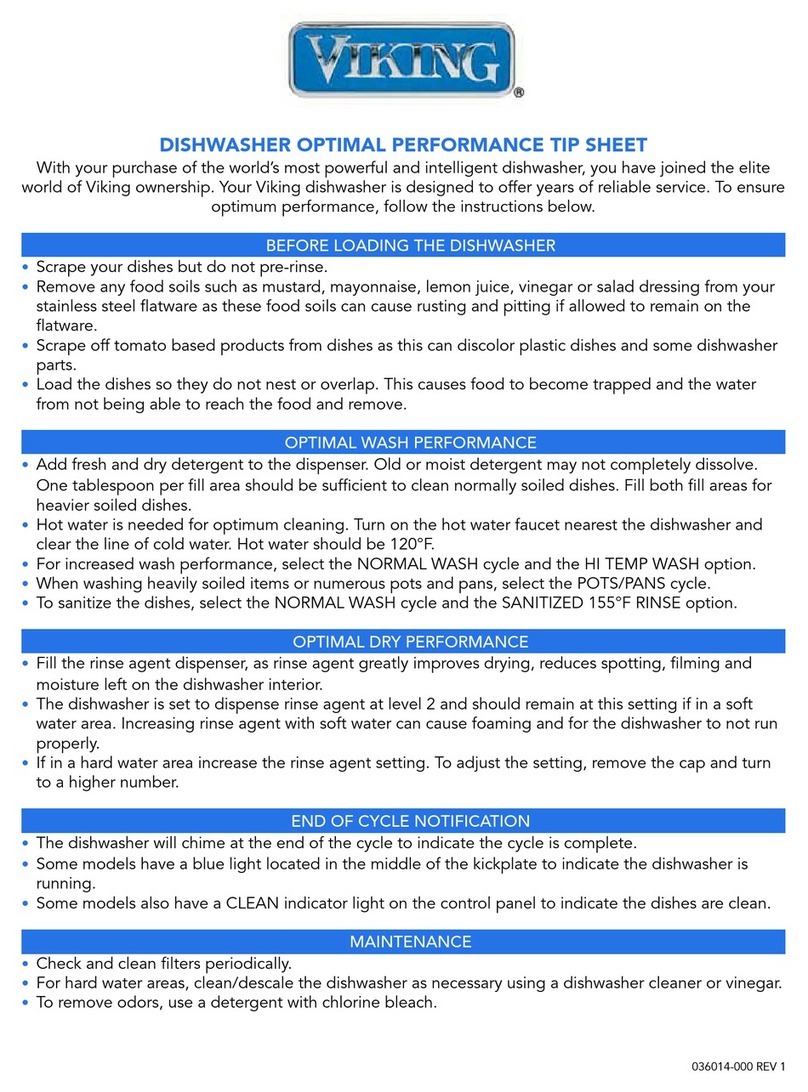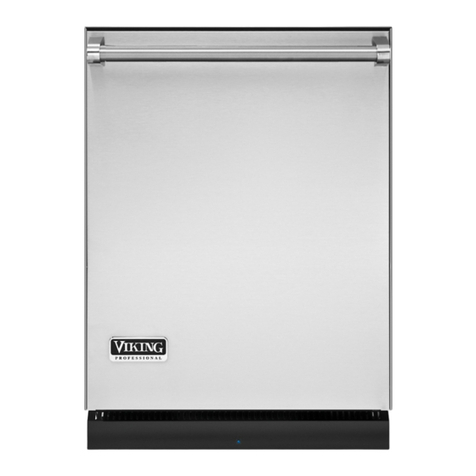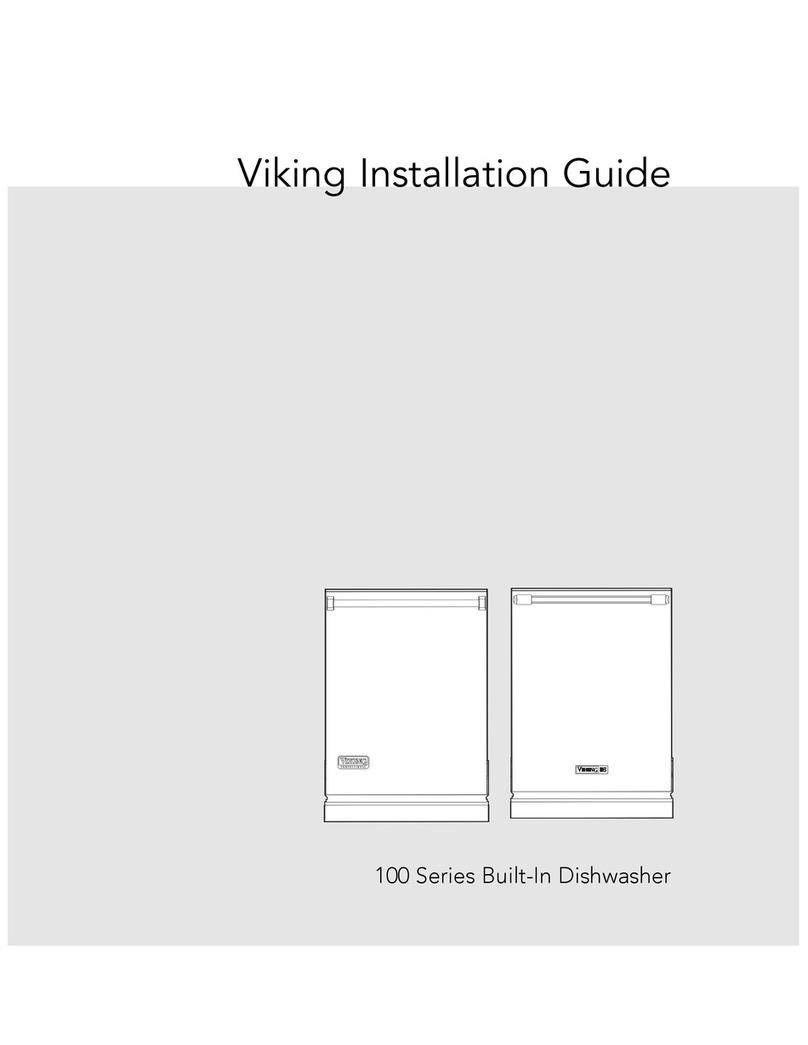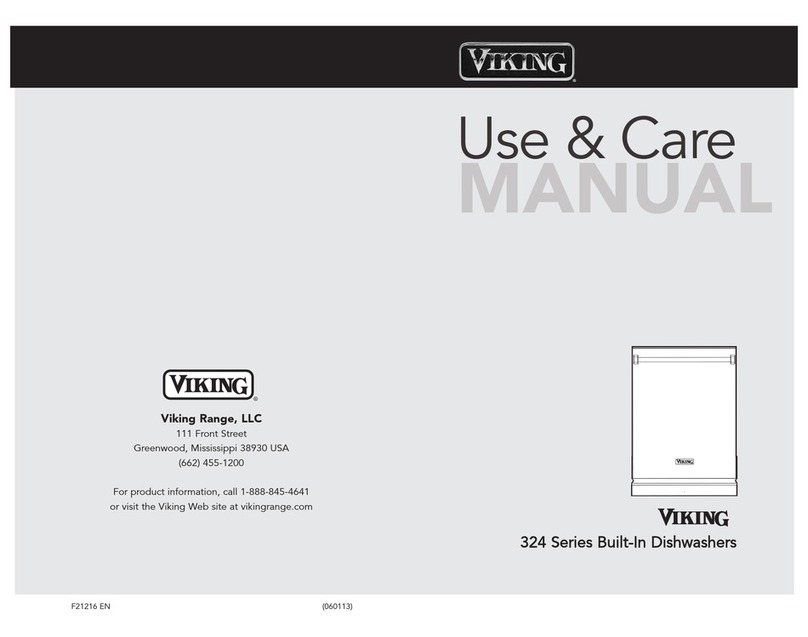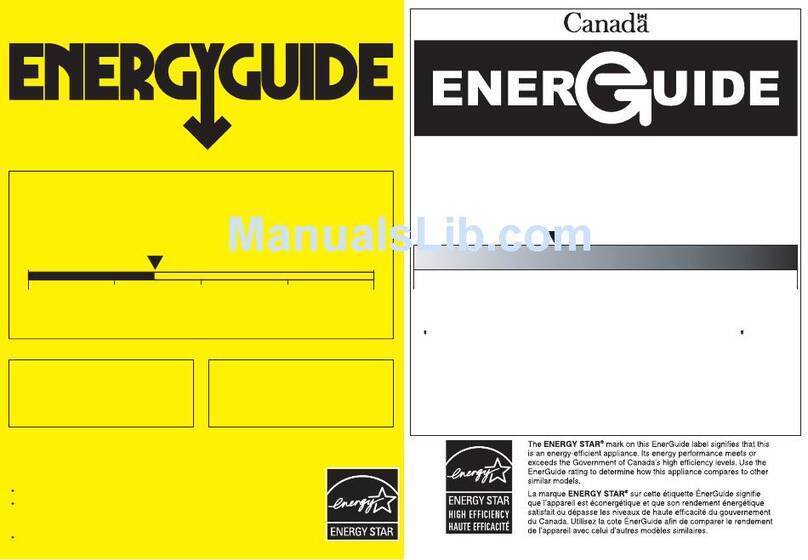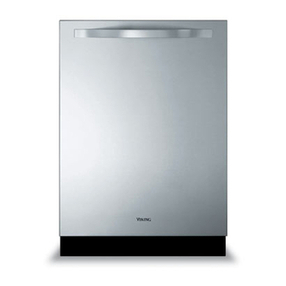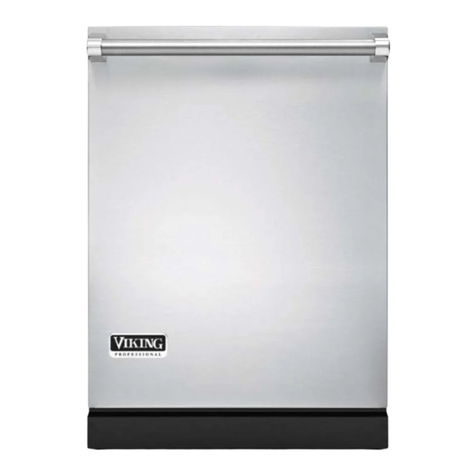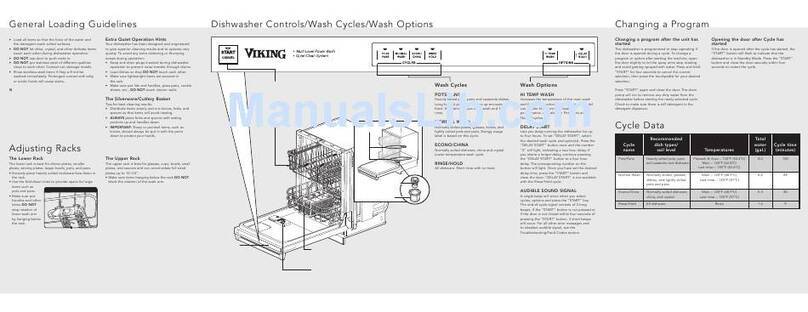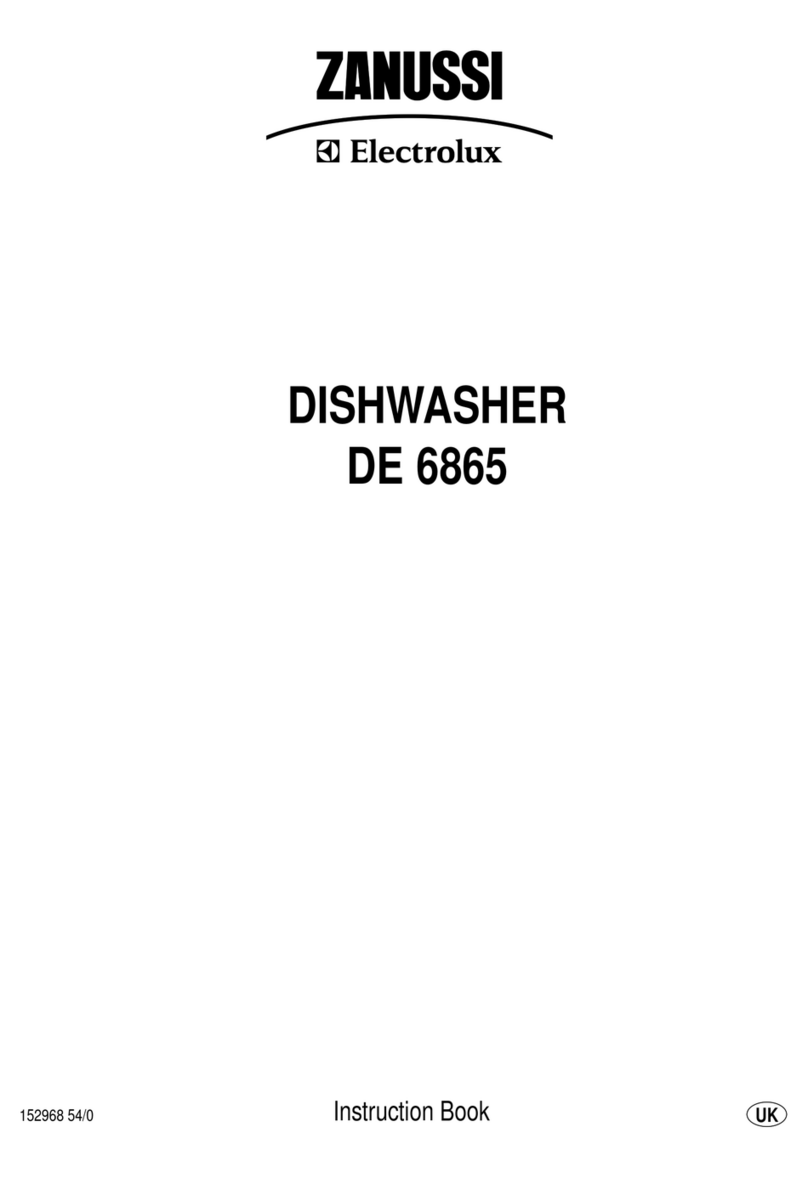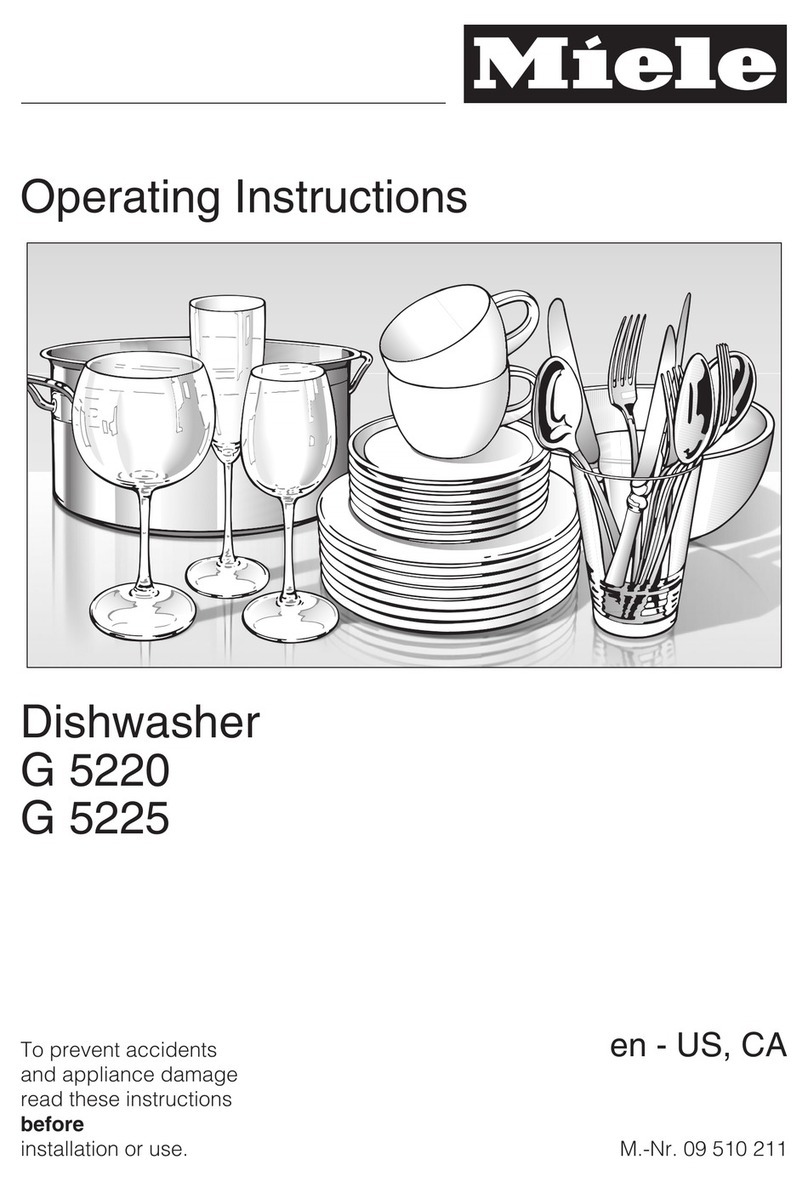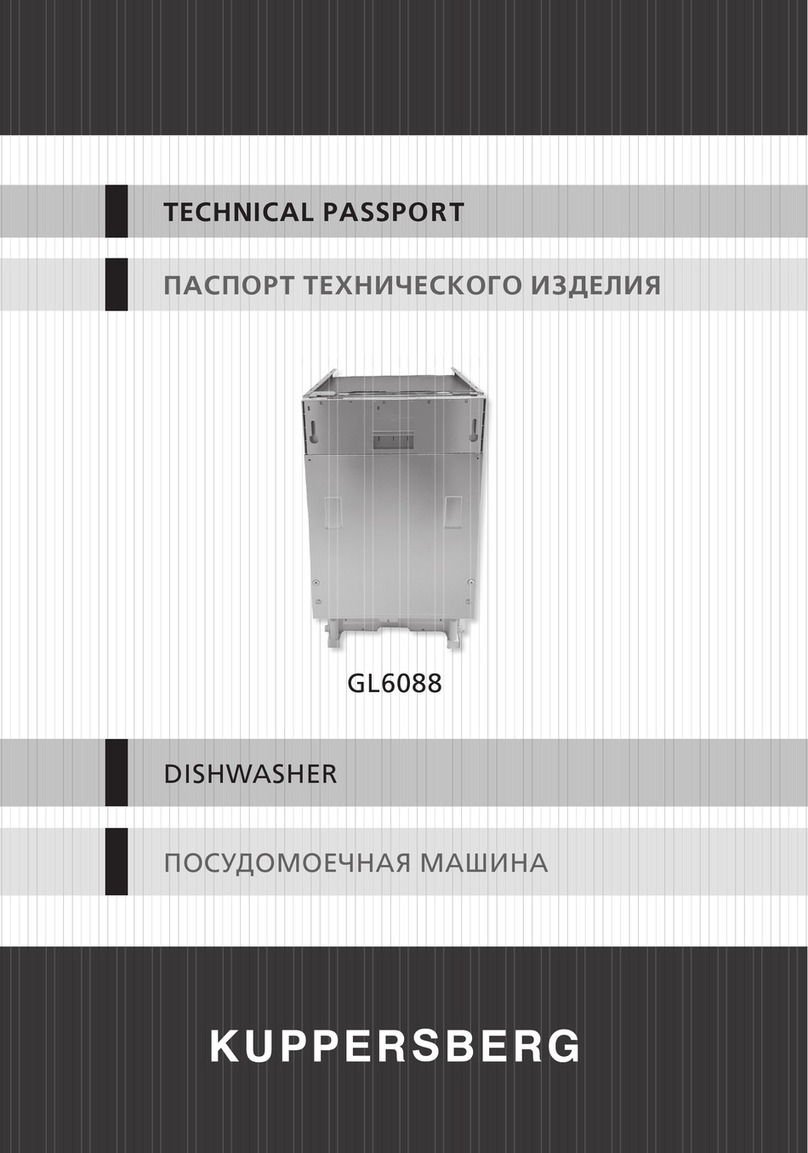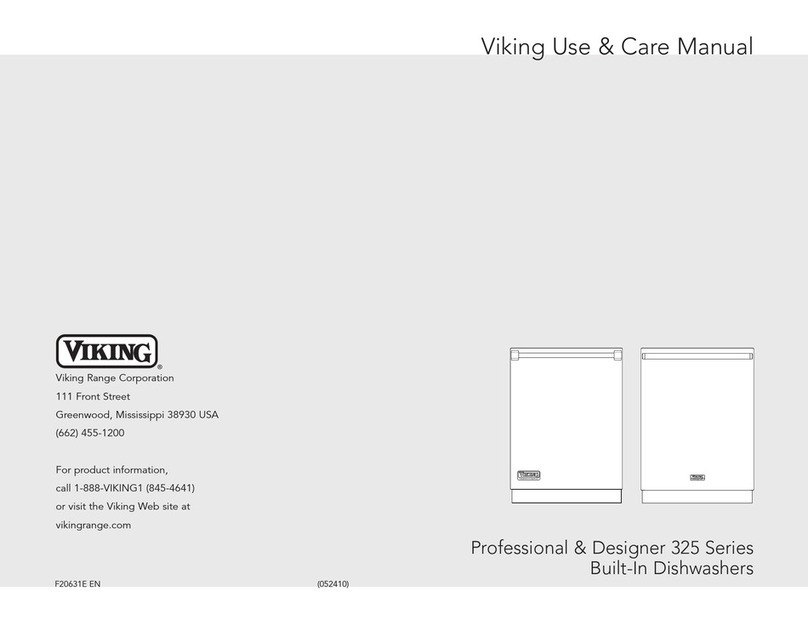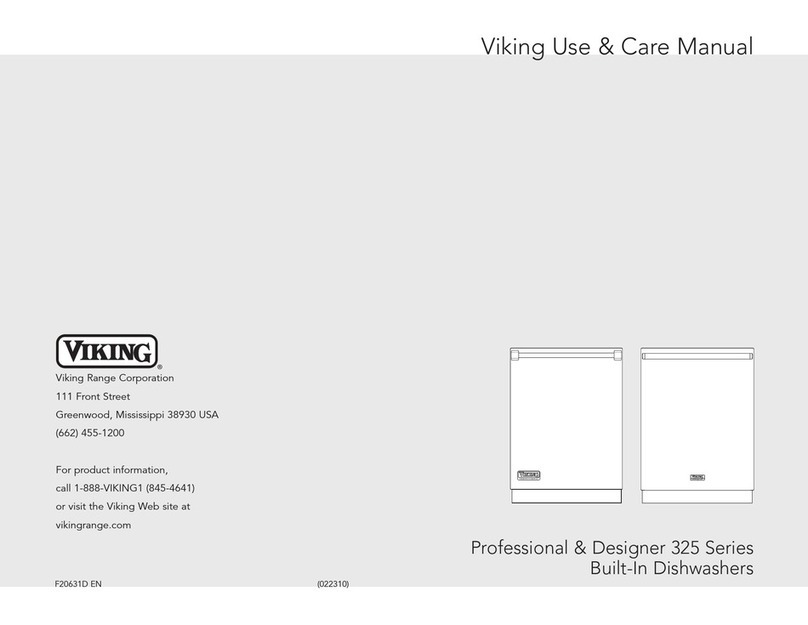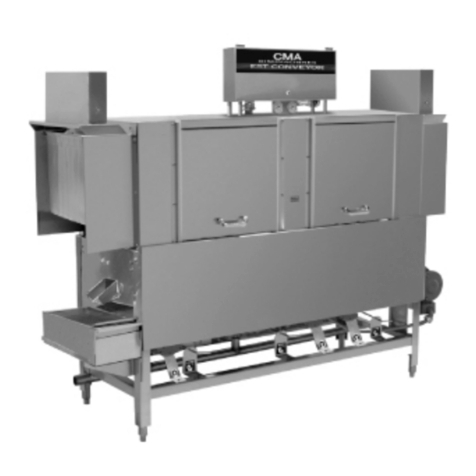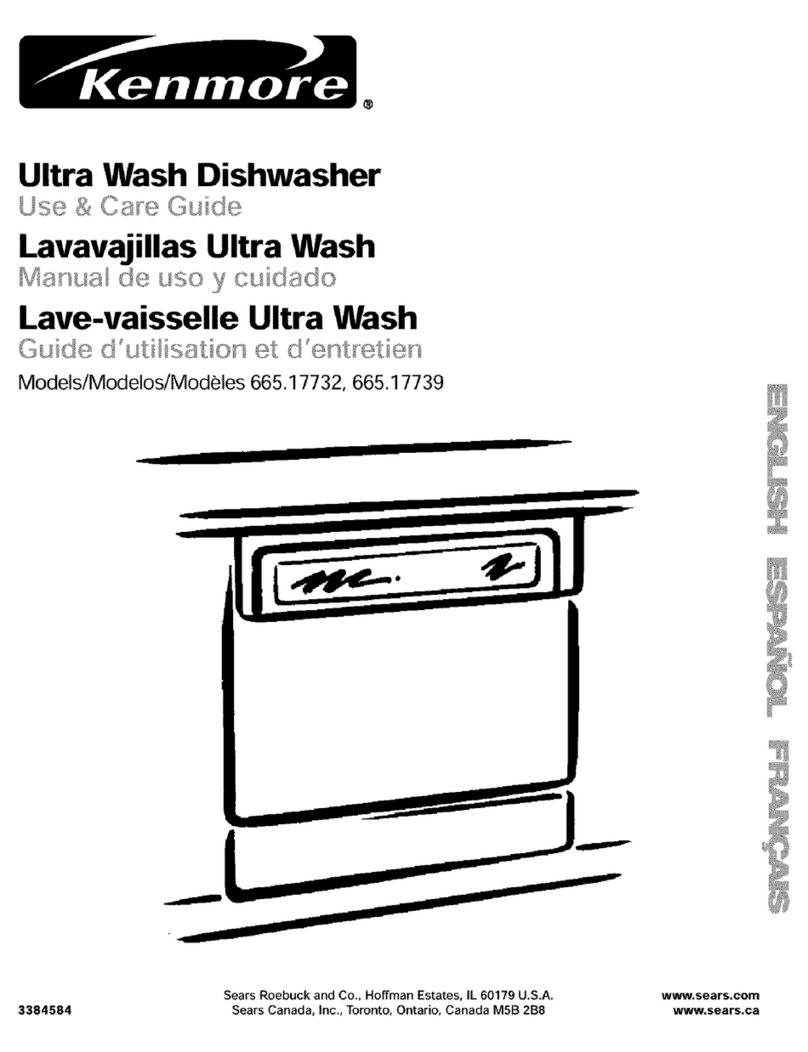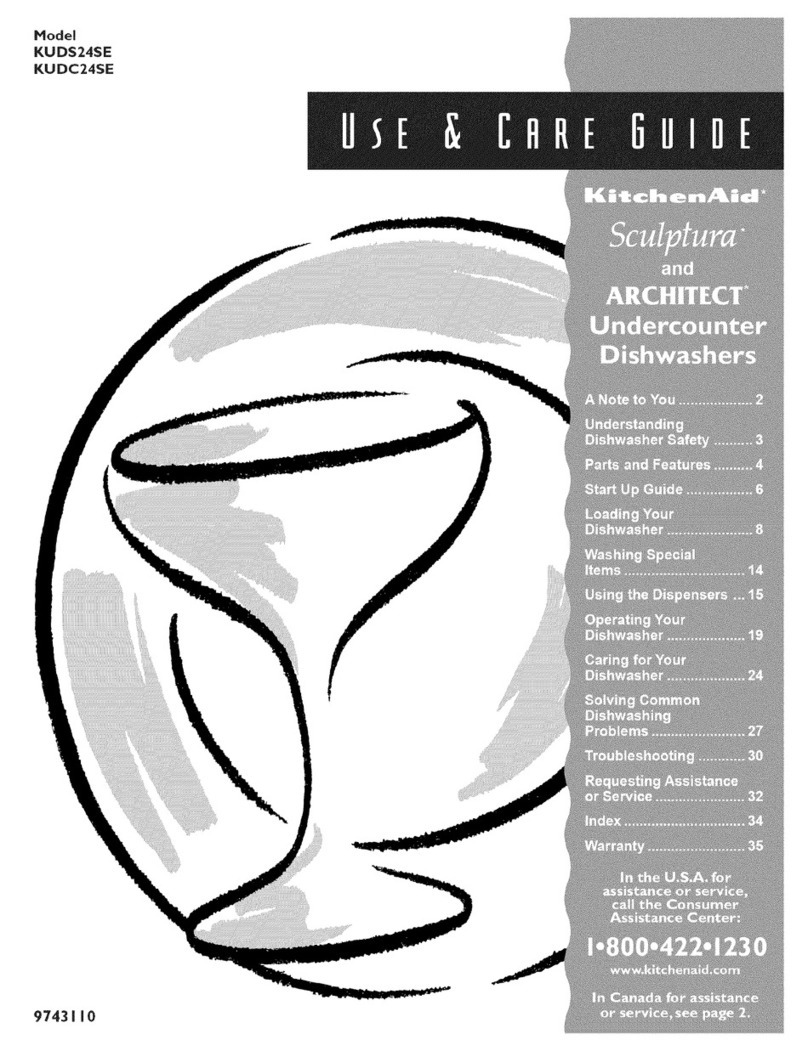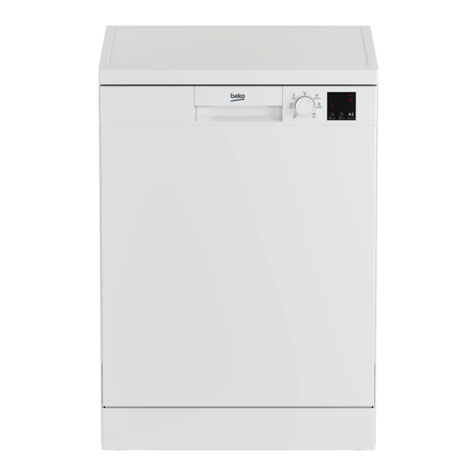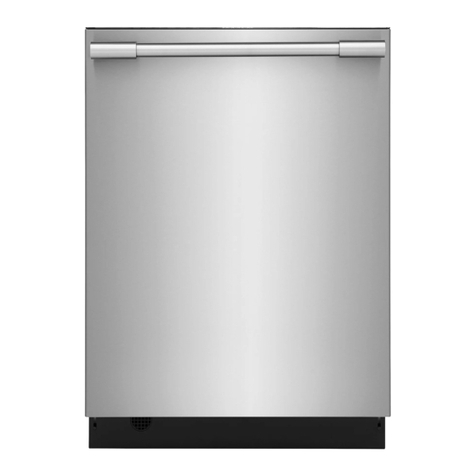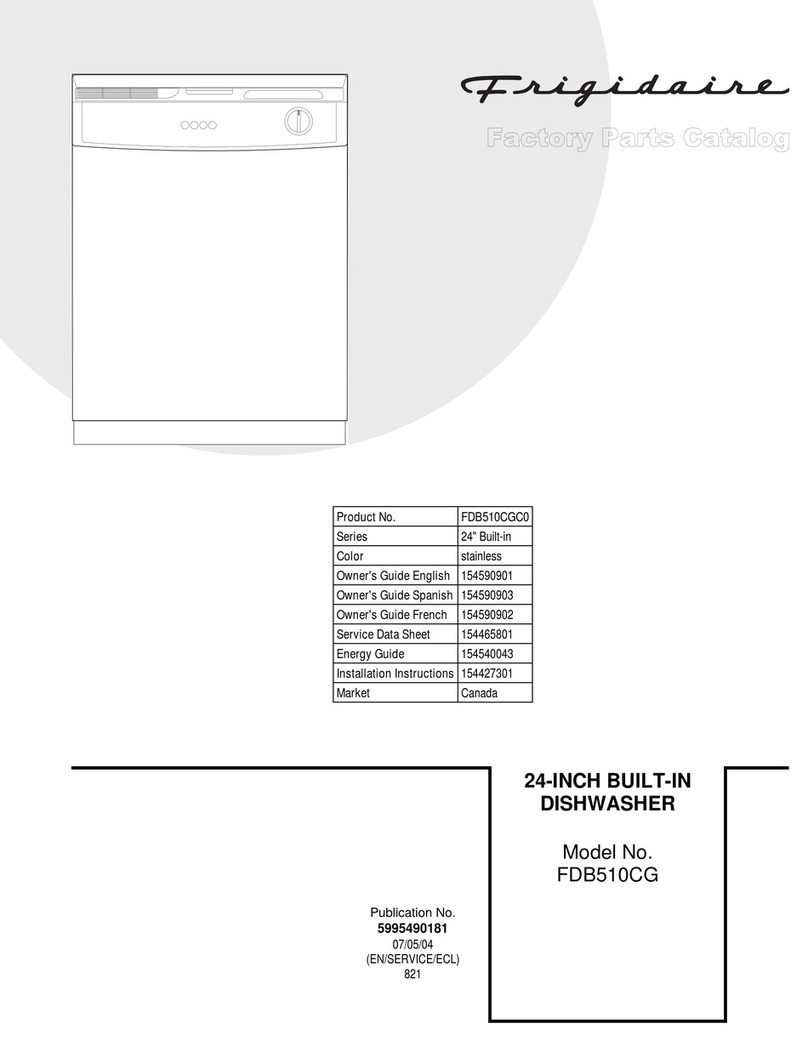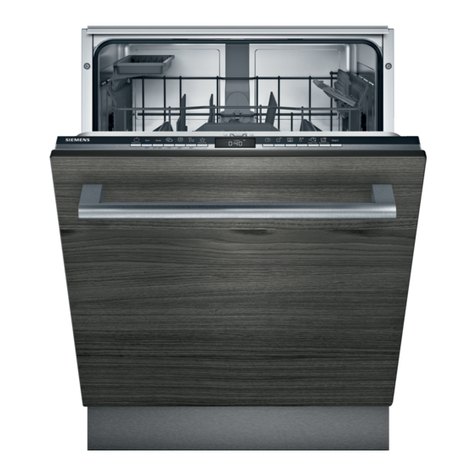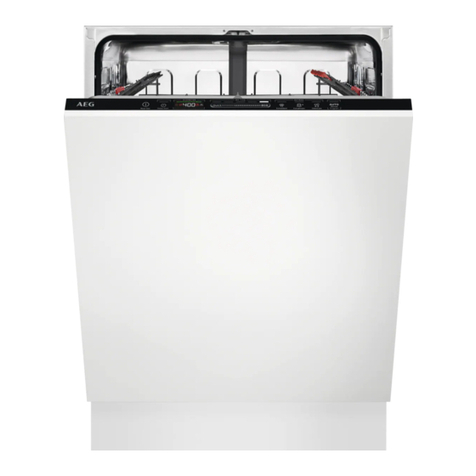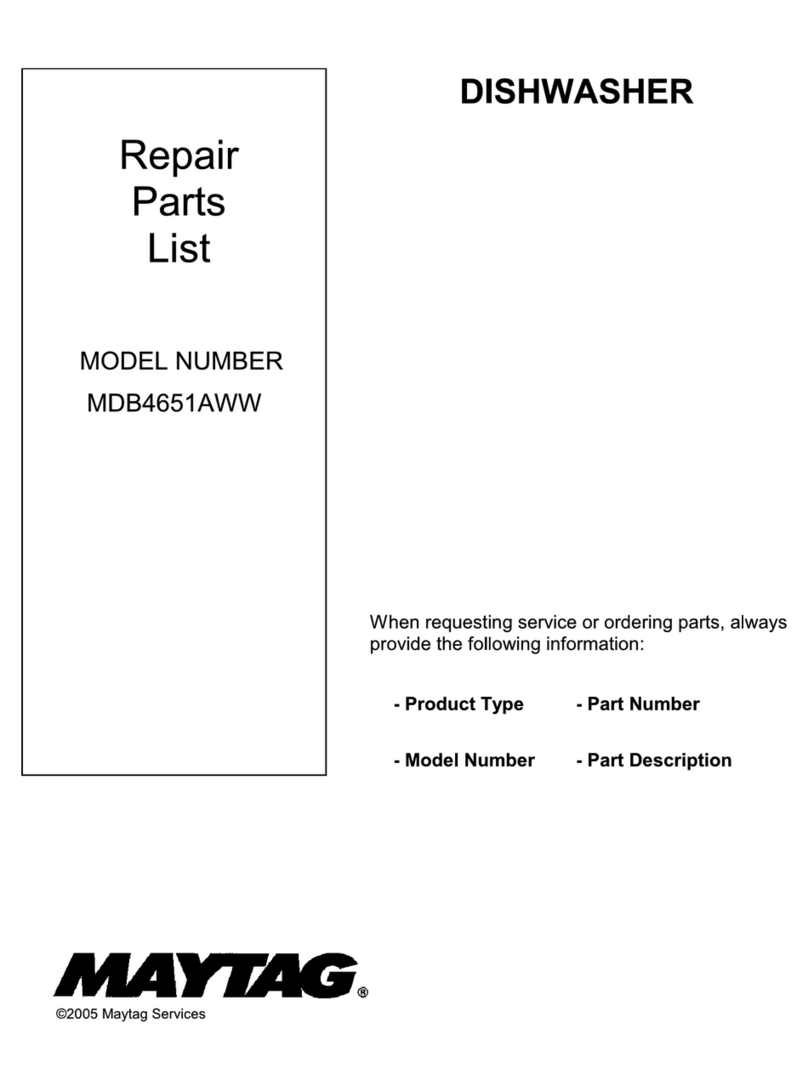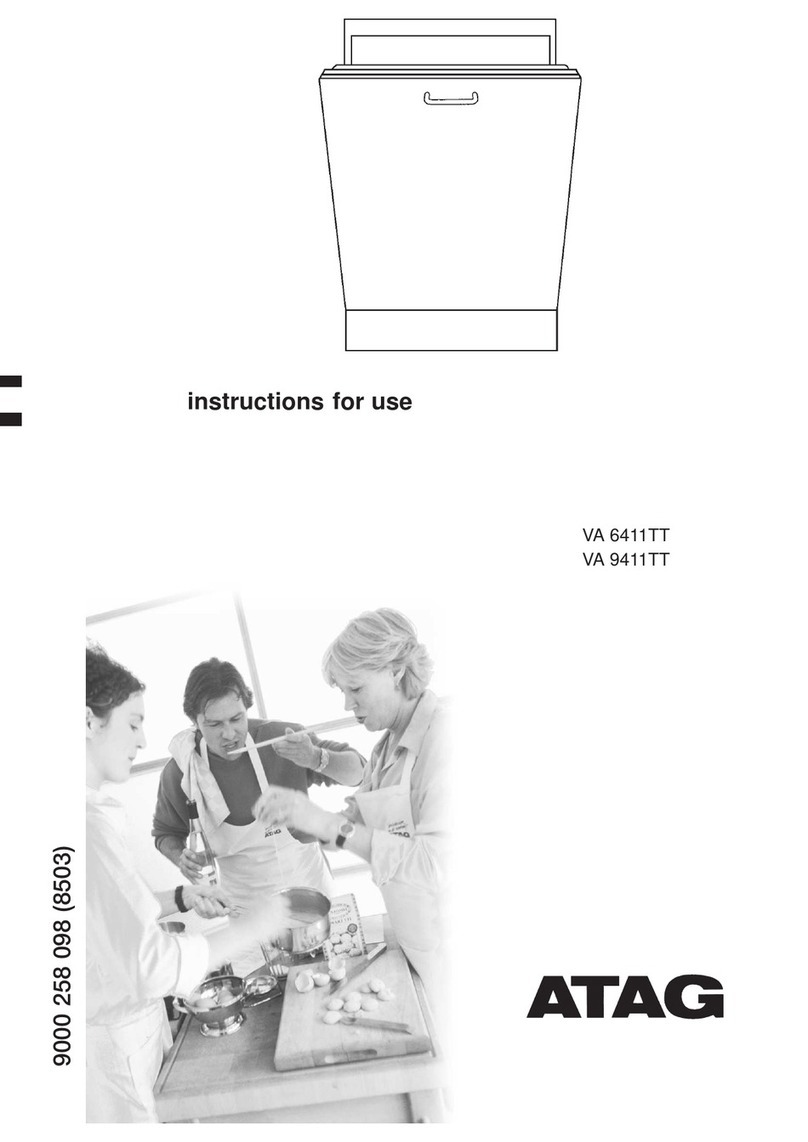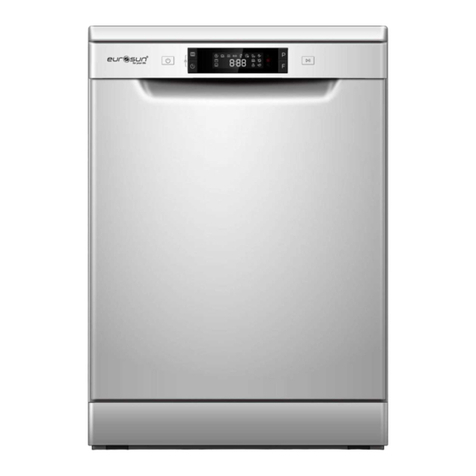35
Product Care
34
Product Care
Troubleshooting
PROBLEM POSSIBLE CAUSE AND/OR REMEDY
Detergent left in Compartment cover blocked
detergent compartment The cover may not be opening because of
improperly loaded items.
Move dishes that may be blocking it.
Old detergent
If detergent is hard or caked in the box,
throw away. Use only fresh detergent. Add
detergent just before starting the dishwasher.
Cloudy film on Too much detergent especially in soft water.
glassware-etching of glass If vinegar or citric acid rinse doesn’t remove film, the
cloudiness is “etching.” This is permanent. If you
have soft water, use the least amount (one
teaspoon) of recommended dishwasher detergent to
prevent etching. Use high quality dishwashing
detergent and rinse aid. Do not overload the
machine. Water should circulate freely to assure
adequate rinsing and draining. Dry without heat.
Dishes not dry Non-heat drying
Allow more drying time when using non-heat drying.
No rinse agent
Fill rinse agent dispenser. Rinse agent helps dishes
to dry faster.
Plastic items
Certain plastic materials are difficult to dry.
Plastics may need towel drying.
Improper loading or unloading
Do not overload or nest items. Be sure all surfaces
drain well. Load items with concave bases so as
much water as possible can run off. Unload the
lower rack first. Water from dishes in the upper rack
may be spilling onto the lower rack.
Chipping or breaking Improper loading
of glassware Do not overload. Load between prongs, not over
them. Glasses loaded over prongs are not
supported and may break. Make sure glassware is
secure. Always use upper rack for delicate items.
Use the light/china cycle.
Unusual noise Improper loading
Utensils may not be secure or may have dropped
from the rack. Water may cause utensils to rattle.
Make sure everything is securely placed in
dishwasher.
Troubleshooting
PROBLEM POSSIBLE CAUSE AND/OR REMEDY
Dishwasher will not fill Door open
Check that door is firmly closed.
Controls
Check that dishwasher is on.
Water feed line
Check to see that the water feed line is not
crimped.
Water supply
Be sure water is available and turned on.
Water backs up in sink Food waste disposer and trap
when dishwasher drains Check disposer and trap at sink for blockage or
food particles.
Water left in bottom Dishwashing cycle not complete
near filters Allow dishwasher to complete cycle.
Some water is normal. Water left in removable
coarse strainer is normal.
Dishwasher will not drain The drain hose is clogged/blocked
Check to make sure there are no obstacles in
the hose where it connects to the water. Foreign
particles can get stuck in the entrance of the
connection line. Also, check to make sure that
the cone-shaped connection line has been cut
to an inner diameter of at least 3/4” (1.9 cm).
The drain hose is kinked
Check to make sure that there are no folds or
sharp bends in the drain hose.
Odor in your dishwasher If you are only running your dishwasher every 2
to 3 days, bacteria in the food soil left on your
dishes will create an unpleasant odor. Use the
Rinse/Hold option in between cycles. To help
eliminate the odor, use a detergent with chlorine
bleach and an extra heat option with your cycle.
If large chunks of food soil are left on plates and
dishes, it may take several washes for them to
pass through the filtration system of the
dishwasher, thus causing food odor. Make sure
the dishwasher is cool; remove chunks of food
soil from filter area. Then run your dishwasher as
normal.
There are products that you can use to clean
your dishwasher such as Glisten, Dishwasher
Magic® and Lemi Shine. These products will
leave your dishwasher free of odor, spots,
deposits and hard water build-up.
Dishwasher has a plastic Your dishwasher may have parts that have a
smell plastic odor to them. Place 2 cups white vinegar
in a dishwasher safe measuring cup and place in
the lower rack. Do not use detergent. Run the
dishwasher through the longest cycle with an
extra heat option. Do not use heated dry.





















